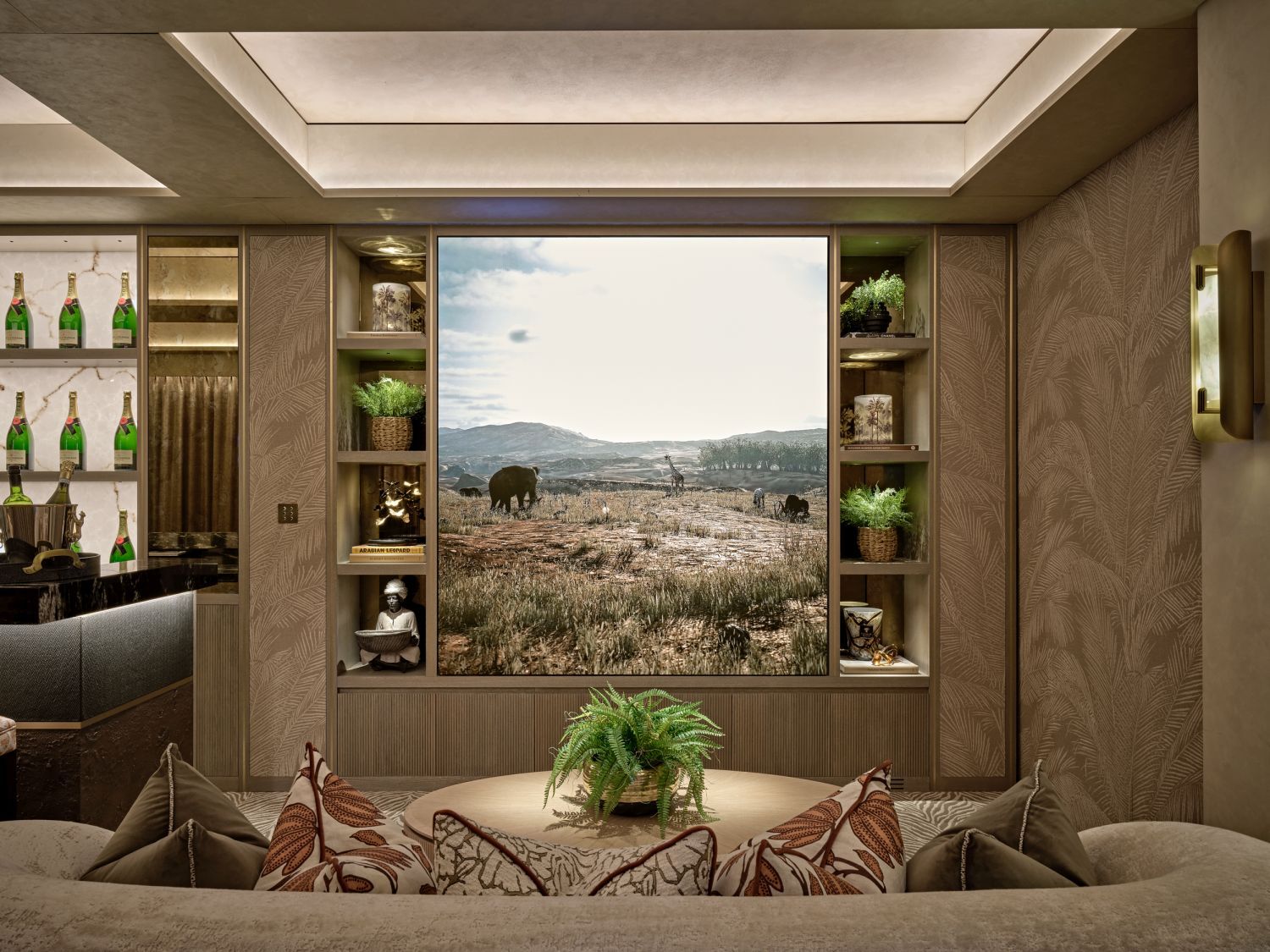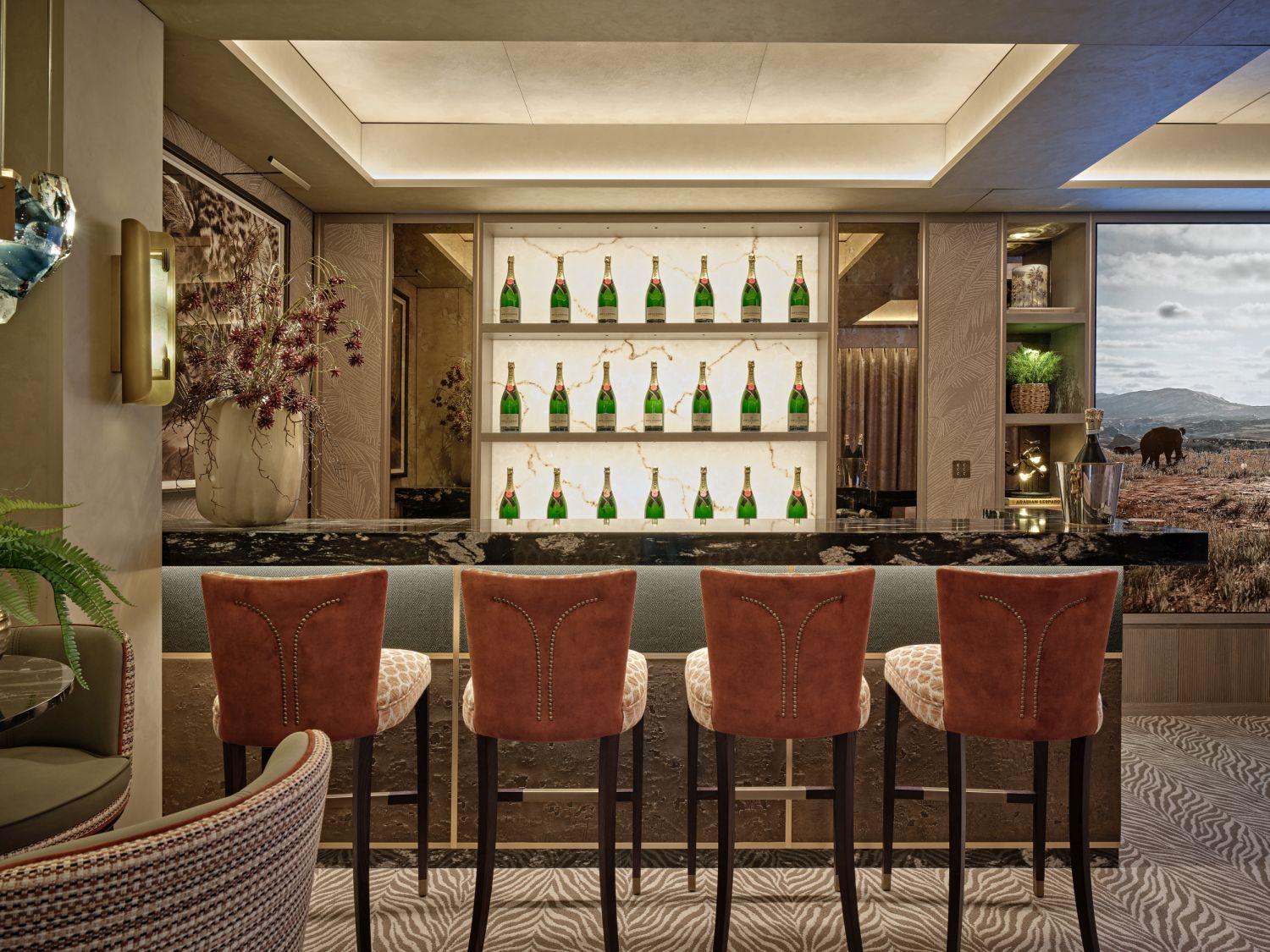Embracing home technology without sacrificing design integrity

Rather than foregrounding gadgets and screens, it demonstrated how technology, when thoughtfully integrated, can elevate the emotional and sensory experience of a space. The installation invited designers to rethink their approach: to see technology not as a distraction, but as a creative partner that enhances light, atmosphere, and comfort, all while remaining invisible to the eye.
A new vision for integrated living
For years, the conversation around smart homes has been dominated by TVs and other hardware. Serengeti Living shifted the conversation dramatically to a focus on elegance, emotional connection and experience.
As James Ratcliffe, Managing Director at home integration firm and CEDIA member, Homeplay, explains, “The technology behind Serengeti Living is there, but it’s intentionally discreet and intangible. Every element had been carefully considered and seamlessly woven into the interior to create an extraordinary experience for visitors to Decorex.”
This philosophy is the foundation of Serengeti Living: a space where technology is invisible, intuitive, and always in service of design.
(Photos: @nicksmithphoto (insta))
Visitors to Serengeti Living found themselves transported from the tranquility of an African savannah to the dynamic energy of a modern home – all within a five-minute theatrical cycle. The experience was powered by Lutron, whose innovations in lighting and shading were woven throughout the space.
“Lighting specifically, whether it’s artificial or natural, is about being able to customise how much you want at different times of day for different applications,” explains Kiana Pourrahimi of Lutron. “Having it be smart and intelligent means your space is always the right light level – energising for work, calming in the evening, or warm and inviting when it’s grey outside.”
The light in Serengeti Living was not just functional; it was emotional. It mimicked the natural curve of the sun, migrating organically from dawn to dusk, immersing visitors in a rhythm that felt both enchanting and restorative.
“When you think of the Serengeti, you think of the sun and the warmth of the environment. Sunlight triggers an emotional connection in all of us,” says Pourrahimi. “To be able to take people away from the show and immerse them in something that uses lighting to create the natural curve of the sun for the day was magical.”
Design-led, not tech-led
Luxury design firm Hill House Interiors helped shape the vision for Serengeti Living.
Co-founder Helen Bygraves emphasises that the best technology is the kind you don’t see. “We always want the wow factor on our projects – amazing sound from hidden places, clarity, and ambience. But as interior designers, we don’t want to see the tech. We want as little visible hardware as possible while intuitive, easy interaction for our clients is a must.”
This ethos was reflected in every detail of Serengeti Living. Light and shades were controlled by Lutron, with invisible speakers from Sonance, delivering a rich, immersive soundscape without a single visible speaker. Every element was orchestrated to ensure that lighting, shading, and audio work in perfect harmony, all controlled simply and intuitively by Control4.
“When a technology integrator works properly with an interior designer, you always get the best end user experience,” says Pourrahimi. “It should be simple, easy to understand, and automated, so you don’t even have to think about it. That to me is the definition of luxury.”
The design team for Serengeti Living drew inspiration from nature, storytelling, and the desire to create a space that felt both other-worldly and deeply comforting. “We wanted to have that element of surprise, something people would take away and remember from the show,” says Bygraves. The result was a modular, sustainable structure that can be re-used and reimagined, reflecting a commitment to both craft and environmental responsibility.
Advice for designers: embrace, don’t fear
For interior designers, Serengeti Living was a call to embrace technology as a creative partner, not an afterthought. “Don’t be afraid of it,” urges Pourrahimi. “Be open to learning and always keep it simple. The best results come from collaboration and choosing the right partners, like Homeplay, who can empower your design vision and imagination.”
As the boundaries between technology and design continue to blur, Serengeti Living offered interior designers a glimpse into the future: a world where light, sound, and atmosphere are choreographed to perfection, and where the true luxury is in how seamlessly the experience will unfold for visitors, offering the potential to transform any living space at home.
Project partners
- Design and integration: Homeplay
- Interior design and furnishings: Hill House Interiors
- Automated curtain track and full colour intelligent lighting: Lutron
- Home automation and unified control: Control4
- Immersive invisible audio: Sonance
- Portrait video art display: LED Studio
- Discreet light fittings: John Cullen Lighting
- Custom bar and media joinery: MHB
Stay informed!
ISE 2026 takes place in Barcelona on 3-6 February 2026. For more updates on all kinds of residential technology – including audio, video, lighting, automation, control and security – and to discover more about ISE 2026 as details are released, sign up for updates.
Don't miss out – join our community today and keep up to speed with all the latest industry trends.






)
)
)
)
)
)
)
)
)
)

)
)
)
)
)
)
)
)
.png/fit-in/500x500/filters:no_upscale())
)
)
)
)
)
)
)
)
)

)
)
)
)
)
)
)
)
)
)
)
)
)
)
)
)
)
)
)
)
)
)
)
)
)
)
)
)
)

)
)
)
)
)
.png/fit-in/500x500/filters:no_upscale())
)
)
)
)